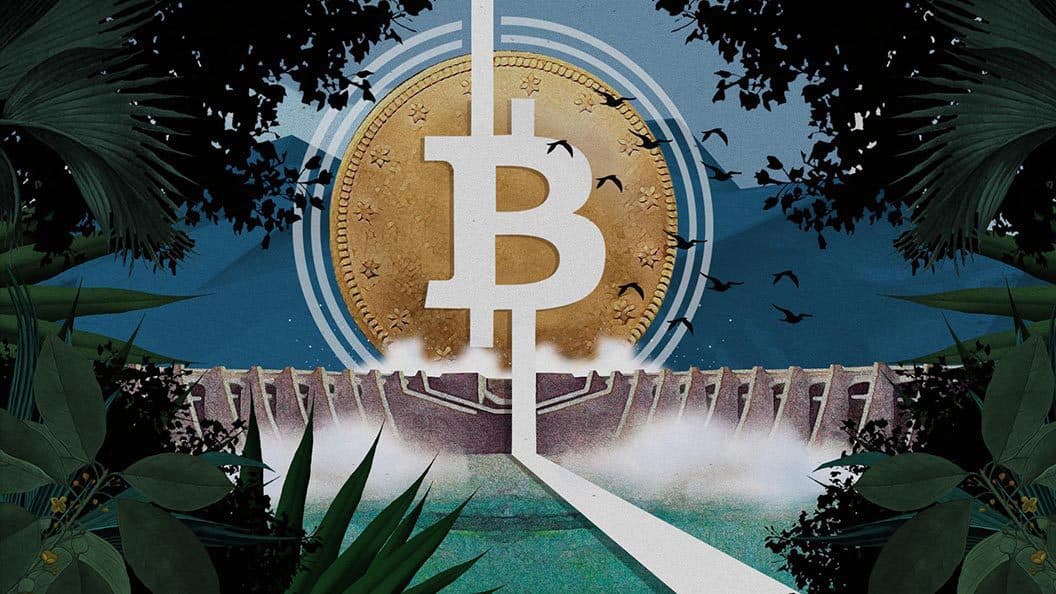Can Bitcoin Hashing Power Itself be Traded?
Mining Pool Operator Titan Announces Lumerin Protocol, and proposes to commodify bitcoin’s means of production by making hashing power tradeable via smart contracts.

Blockworks exclusive art by axel rangel
- Titan’s Lumerin Protocol would allow for bitcoin’s hashing power to be traded, creating a market for the discovery of new electrical sources through incentivizing the capture of wasted energy
- Titan Protocol CEO told Blockworks that this would effectively create a derivative of electricity, connecting otherwise siloed grids to a peer-to-peer network of energy storage
Around the world, there’s plenty of electricity that’s generated but then wasted: There are hydroelectric plants with turbines that still churn despite a departed population or industry no longer there to consume the power, or a coal-fired plant that continues to burn even as the city it powers turns off its lights and heads to bed. The nature of electricity means there’s a lot of excess and waste in its generation.
After all, you can only produce electricity when you are using it. To date, there’s not an effective way to store power at scale. Power companies must target peak power needs, and excess power is simply wasted.
In the last year there have been many high-profile projects that seek to locate abandoned power and build mining capacity around it. But a new project from bitcoin mining pool operator Titan proposes to take this a step further, and commodify hashing power to make it a tradeable, liquid commodity.
“The moment you translate electricity into hash rate now it’s actually a part of this global peer-to-peer network,” Ryan Condron, CEO of Titan, told Blockworks in an interview.
“We’re actually translating electricity into a global transferable commodity, it really opens up a lot of what we call ‘stranded power.’”
Condron explained that the Lumerin protocol would effectively monetize the inefficiencies of the grid, and allow power producers to avoid having to ramp down or ramp up production with changes in demand. Instead, miners attached to the grid could adjust operations as required — a much easier process than shutting down a coal-fired plant or restarting it in a short time frame.
 Ryan Condron; Source: Twitter
Ryan Condron; Source: Twitter“They can really run full tilt, and they’ll always have a customer for their electricity, regardless [of] where it is in the world,” he said. “So now, we have miners scouring the earth for this stranded electricity, and it’s just going to drive the cost of electricity lower and lower while we start tapping into grids that were inaccessible before.”
This also addresses the issue of centralization in bitcoin, as smaller pools could be created around power that is only occasionally available, such as when a city goes to sleep and turns out the lights.
“We really think that the idea of decentralization is one where we can take one mining facility with a hundred thousand devices, and we could actually divide it up rather than having one owner point all those hundred thousand devices, we can actually decentralize the control of those devices,” he said. “This will allow anyone to harness the power of crypto through bitcoin mining in a decentralized way.”
Condron says that the most interested group so far has been the power industry, who just “get it” when he describes the project to them, as it addresses such an obvious problem with a practical use case.
“My Dad worked at a nuclear power plant for 30-something years and I told him about what we were working on at Titan and his eyes almost popped out of his head,” Condron said, telling Blockworks that his Dad’s reaction was “yeah, we need that.”
Condron doesn’t yet have a timeline for the launch of Lumerin, but says there are ongoing conversations happening behind the scenes at this time.






